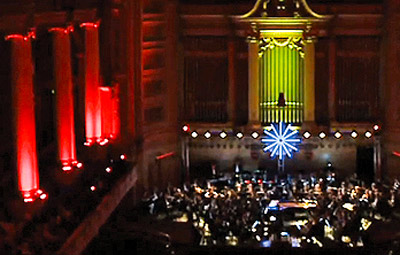color and music

Performance of Scriabin's Prometheus.
There is a natural tendency to find analogies between sound and color, and even to develop definite theories as to a scientific relationship between them based on the fact that both are the result of vibrations; such theories, however plausible at first sight, are on consideration seen to be erroneous for the octave of notes has no definite relationship to the scale of colors and any comparison of the two is arbitrary.
Many people experience a mental association between keys and colors but this association is purely subjective and personal, differing widely with different individuals (for instance to Rimsky-Korsakov the key of C major was white, while to Scriabin it was red).
There have been, from the seventeenth century onwards, many suggestions that musical effects and color effects should be combined and experiments in this direction continue to be made. Interesting results may thus be obtained, of which composers have sometimes tried to take advantage – e.g., Scriabin in his Prometheus and Schönberg in his Die glückliche Hand ('The Lucky Hand'), the scores of both of which include a line of notation for a play of colors on a screen during the musical performance.
When composing a piece known as the Colour Symphony, Arthur Bliss experienced sensations of color, and hence titled his four movements "Purple", "Red", "Blue", and "Green".


